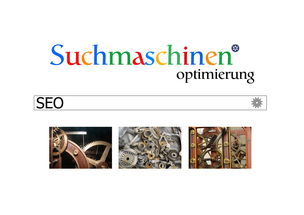In the dynamic landscape of digital marketing, Search Engine OptimizatiOn (SEO) plays a critical role in determining the visibility and success of a website. While content remains the king, images are undeniably powerful elements that contribute significantly to user engagement and search engine rankings. Therefore, optimizing images for SEO is not just important - it is essential. In this article, we will delve into the reasons why image optimization should be an integral part of any SEO strategy, the benefits it offers, and practical tips on How to optimize images effectively.
The Internet is a visually driven space, where users seek instant gratification through compelling and informative content. High-quality, relevant images not only enhance the aesthetic appeal of a webpage but also break up text, making the content more digestible and engaging. This increased user interaction signals to search engines that the page is valuable, which can lead to improved rankings. Moreover, optimized images can directly generate traffic from image search results, providing another pathway for potential customers to discover your website.
Image optimization involves a series of steps that ensure your images are both user-friendly and search engine friendly. Here's how to go about it:
1、Choose the Right Image Format: Different image formats like JPEG, PNG, and WebP have varying levels of compression, which affects file size and quality. Generally, JPEG works well for photographs, PNG for transparent backgrounds, and WebP for superior compression without significant quality loss.
2、Compress Images Without Losing Quality: Large image files can slow down page load times, negatively affecting both User Experience and SEO. Use tools like Adobe Photoshop, TinyPNG, or online platforms like Kraken to compress images while retaining their quality.

3、Resize Images Appropriately: Always resize your images to fit the dimensions required on your website. Avoid using oversized images as they can increase load times and create distorted appearances if scaled down by the browser.
4、Use Descriptive File Names: Instead of generic names like "IMG1234.jpg," use descriptive, keyword-rich file names that relate to the image content and the surrounding text. This helps search engines understand the context of the image.
5、Add Alt Text: Alt text, or alternative text, is the text that appears when an image cannot load or is being read by assistive technologies such as screen readers for visually impaired users. It provides a description of the image and is crucial for SEO. Ensure your alt text is precise, includes relevant keywords, and describes the image accurately.
6、Incorporate Image Sitemaps: An image sitemap helps search engines better crawl and index your images. It's a type of XML sitemap that lists the URLs of all the images on your website.
7、Lazy Load Images: Lazy loading is a technique where images are loaded only when they are about to enter the viewport, reducing initial page load times. This improves user experience and can potentially boost SEO rankings.
8、Use Image Captions: Image captions provide additional context to the image and can strengthen the message conveyed by the visual content. They also contribute to keyword density on the page, which can influence SEO.
9、Ensure Accessibility: Following accessibility guidelines not only makes your website more inclusive but also benefits SEO. Proper use of alt text, maintaining a good contrast ratio, and ensuring images are responsive are key considerations.
10、Monitor Image Performance: Use analytics tools to monitor how images are performing on your website. Pay attention to metrics like bounce rates and time spent on pages with images to gauge their effectiveness.
In conclusion, optimizing images for SEO is not merely a nice-to-have; it is a vital component of a comprehensive SEO strategy. By following the best practices outlined above, you can significantly enhance the performance of your website, improve user experience, and ultimately achieve higher search engine rankings. Remember, every aspect of your website, including the images, plays a role in how search engines evaluate and rank your content. Therefore, investing time and effort into image optimization is an investment in the long-term success of your online presence.
评论列表 (0条)